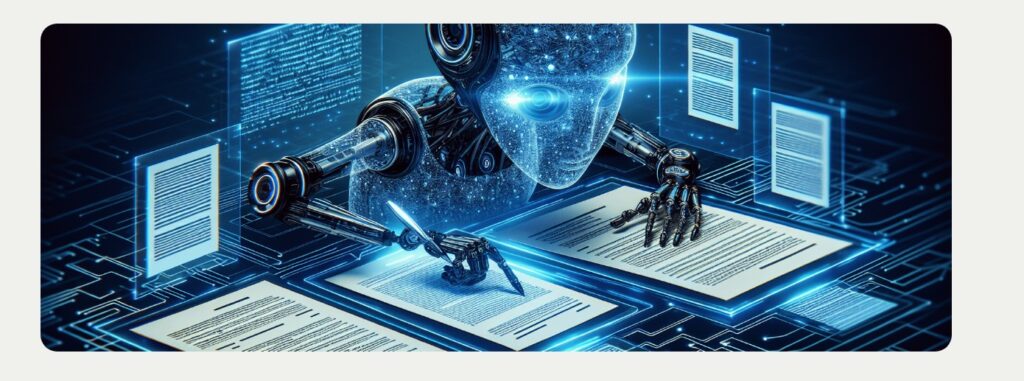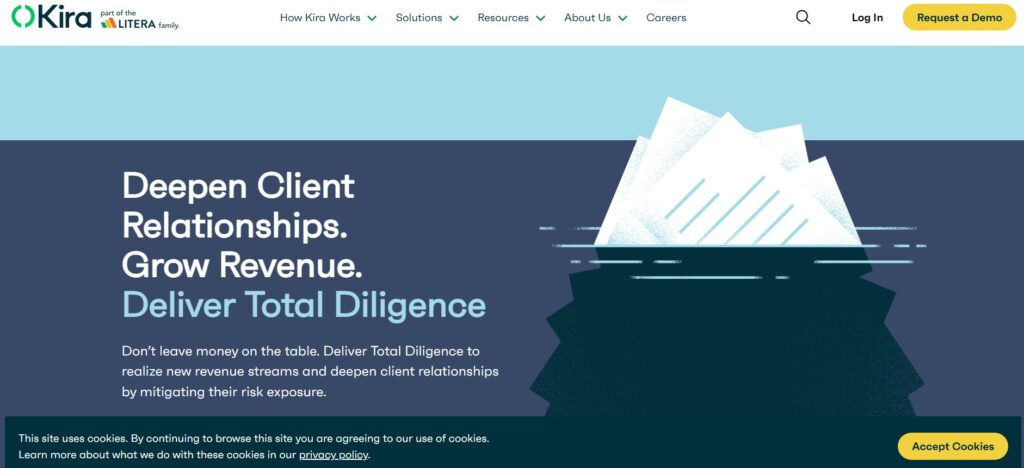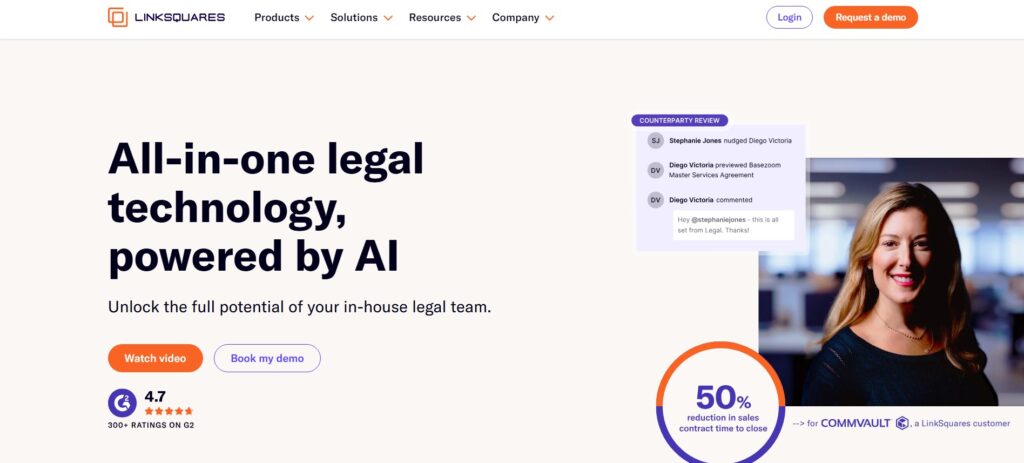AI-powered contract management
AI-powered contract management: 10 top practical use cases.
Managing contracts is one of the most critical yet complex tasks in any organization, and AI-powered contract management is transforming how businesses handle this essential process.
With artificial intelligence, companies can now automate time-consuming tasks like reviewing, organizing, and tracking contracts, reducing manual effort and the risk of human error. This technology helps ensure compliance, improves visibility, and allows for faster contract lifecycle management, from drafting to approval and renewal.
For those working closely with legal and operational teams, AI-powered contract management tools provide real-time insights, detect potential risks, and streamline communication across departments. By automating workflows and analyzing large volumes of contract data, these tools not only save time but also enable smarter, data-driven decision-making.
In this post, I’ll explore how AI is changing contract management, the specific benefits it offers, and why it’s becoming a game-changer for organizations looking to boost efficiency and reduce legal risks.

AI-powered contract management
1. Clause Extraction
Clause extraction utilizes natural language processing (NLP) to automatically identify and extract key clauses—like confidentiality, termination, or indemnification—from contracts. This simplifies the review process by making these clauses easily searchable and accessible across large document libraries.
Use Cases: Companies that handle numerous contracts can ensure compliance by standardizing critical clauses across agreements. Law firms, financial institutions, and multinational corporations use clause extraction to quickly identify clauses that could introduce risks or require special attention.
Real-Life Example: DocuSign Insight
DocuSign Insight’s clause extraction allows teams to quickly locate specific clauses, ensuring compliance and mitigating risk by standardizing contractual language. For example, DocuSign Insight is used by companies in regulated industries, such as healthcare, to locate and review all clauses related to patient confidentiality.
Learn more: DocuSign Insight LexCheck Blog
2. Metadata Extraction
Metadata extraction pulls out essential details from contracts, such as parties involved, effective dates, contract values, and renewal dates. This process aids in organizing, searching, and auditing contracts and helps in tracking contract lifecycle milestones.
Use Cases: Metadata extraction is particularly valuable in industries that handle high volumes of contracts, such as real estate, finance, and government. It enables companies to track renewal dates, stay compliant with contract terms, and avoid overlooked obligations.
Real-Life Example: Icertis Contract Intelligence (ICI)
Microsoft uses Icertis to manage over a million contracts, extracting metadata like renewal dates and party details to streamline contract lifecycle management. This prevents missed deadlines and supports compliance by alerting teams to upcoming renewals or expiring contracts.
Learn more: Icertis, Contracts 365
3. Clause Comparison & Risk Rating
This feature compares contract clauses against a standard or template clause, identifying deviations and assessing risk levels. AI highlights differences in language that may introduce risks, allowing teams to prioritize contracts that need attention.
Use Cases: Organizations in legal, finance, and insurance often use this feature to ensure contracts meet internal compliance standards. Clause comparison is also helpful for assessing the risks associated with vendor agreements, merger documents, and employment contracts.
Real-Life Example: Kira Systems
Kira Systems provides clause comparison for large corporations to quickly assess deviations in high-risk contracts. Financial institutions, for example, use Kira to analyze loan agreements, ensuring that high-stakes clauses are consistent with their risk tolerance and regulatory requirements.
Learn more: Kira Systems
4. Contract Language Translation
AI-driven contract language translation facilitates accurate and fast translations for global teams working across multiple languages. This ensures that contractual obligations are correctly understood, regardless of language barriers.
Use Cases: Multinational corporations, legal firms, and NGOs working across regions use AI-driven translation to streamline cross-border agreements, ensuring that translated terms are accurate and legally binding.
Real-Life Example: Google Cloud’s AutoML Translation
AutoML Translation by Google Cloud is tailored to legal contexts, providing customizable translations for industry-specific terminology. International law firms use it to translate contracts from English into Spanish, French, and other languages to maintain accuracy while reducing translation costs.
Learn more: Google Cloud AutoML Translation
5. Obligation Extraction
Obligation extraction identifies contractual commitments, such as payment terms, delivery dates, and reporting requirements, allowing organizations to track and meet obligations proactively.
Use Cases: Obligation extraction is essential for industries with strict compliance requirements, such as pharmaceuticals, finance, and government. It helps prevent breaches and ensures all parties fulfill their commitments as per contract terms.
Real-Life Example: Evisort
Evisort’s AI tracks obligations within contracts, like reporting schedules and payment deadlines. For instance, healthcare providers use Evisort to manage compliance obligations, such as audit deadlines, ensuring all requirements are met and reducing the risk of non-compliance.
Learn more: Evisort
6. Contract Summarization
Contract summarization tools leverage AI to provide concise overviews of lengthy contracts, highlighting key terms, clauses, and obligations. This enables users to quickly understand the most important aspects without reading the entire document.
Use Cases: Companies often need quick access to key contract information for decision-making. Legal teams, procurement departments, and project managers use AI-powered contract summaries to streamline reviews of vendor agreements, client contracts, and service-level agreements.
Real-Life Example: Luminance
Luminance’s AI-powered contract summarization is utilized by law firms and corporations to review and digest contracts quickly, especially useful in due diligence processes. With clients including multinational law firm Slaughter and May, Luminance’s summarization technology speeds up contract reviews, enhancing decision-making and legal compliance.
Learn more: Luminance
7. Automated Contract Renewal Management
AI helps manage and track contract renewal dates and relevant terms, sending notifications for upcoming renewals. This avoids lapses in contracts, missed opportunities, or unfavorable renewals without proper evaluation.
Use Cases: Subscription-based businesses, IT service providers, and companies with vendor agreements benefit from automated renewal management to keep track of renewal dates and review contract terms periodically, ensuring favorable conditions.
Real-Life Example: CobbleStone Software
CobbleStone’s contract management platform includes AI-driven renewal notifications, helping clients like the U.S. government to manage contract renewals efficiently. This is particularly valuable in industries where contracts need renegotiation or termination to align with budget or regulatory changes.
Learn more: CobbleStone Software
8. Contract Compliance Monitoring
AI monitors compliance by assessing clauses and obligations against regulatory requirements. This functionality ensures that all contracts comply with internal policies and external legal frameworks, flagging potential issues before they lead to breaches.
Use Cases: Compliance monitoring is critical for regulated industries like pharmaceuticals, healthcare, and finance. Companies use this AI feature to ensure adherence to GDPR, HIPAA, and other regulatory standards by automating checks on data-sharing clauses and confidentiality terms.
Real-Life Example: Thomson Reuters Contract Express
Thomson Reuters provides compliance monitoring for financial and legal institutions to keep contracts in line with evolving regulations. Financial services firms, for instance, use Contract Express to automate compliance in client contracts, protecting them from potential penalties and enhancing legal integrity.
Learn more: Thomson Reuters Contract Express
9. Negotiation Support and Redlining
AI assists in contract negotiation by comparing proposed language to standard clauses, suggesting redlines, and evaluating counterparty language. This speeds up the negotiation process by identifying non-standard terms and suggesting alternatives.
Use Cases: Procurement, sales, and legal departments use AI for negotiation support to efficiently redline contracts and ensure that the terms align with the organization’s risk tolerance. This feature is also helpful for identifying areas where compromise is feasible.
Real-Life Example: Juro
Juro’s contract management solution offers AI-powered negotiation support, allowing teams to automatically review, compare, and redline contract clauses. Startups and SMEs benefit from Juro’s rapid redlining capabilities, reducing time spent on negotiations and enhancing contract transparency with clients.
Learn more: Juro
10. Legal Entity and Party Mapping
This feature uses AI to identify and map parties and entities within contracts, ensuring that the contract references are accurate and that all legal entities are correctly represented.
This is crucial for contracts with multiple stakeholders or for organizations working in jurisdictions with varying legal standards.
Use Cases: Legal and compliance teams at multinational corporations use party mapping to manage risks and clarify responsibilities across entities in complex contracts. It is particularly useful for mergers, acquisitions, and joint ventures, where clarity on involved entities is vital.
Real-Life Example: LinkSquares
LinkSquares applies AI-driven entity mapping in contracts, used by companies in M&A activities to accurately map all parties involved, ensuring that contractual obligations are enforceable and clear. This function helps streamline corporate structuring and facilitates clean data mapping for compliance purposes.
Learn more: LinkSquares
In conclusion: AI-powered contract management is transforming how businesses handle their contracts, leading to faster, more efficient, and accurate processes.
By automating repetitive tasks and providing valuable insights through data analysis, AI allows legal and operational teams to manage contracts with greater ease, significantly reducing human error and enhancing compliance.
With capabilities like risk detection, real-time tracking, and automated approvals, these tools empower organizations to streamline workflows, lower costs, and make informed decisions based on reliable data.
As more companies integrate AI into their contract management practices, they are better equipped to address complex legal and operational challenges.
This transition to AI-driven processes is not just a strategic advantage; it’s a necessary step in today’s fast-paced, data-rich business environment. By embracing AI-powered contract management, organizations can stay ahead of the curve, mitigate risks, and develop stronger, more efficient contract systems that support long-term growth and success.






















